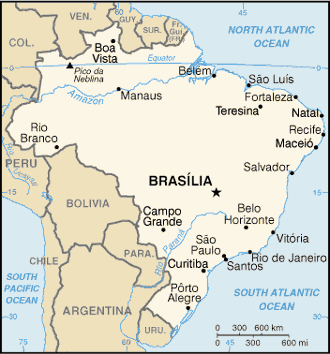Microcephaly is a medical condition in which the circumference of the head is smaller than normal because the brain has not developed properly or has stopped growing. In northeast Brazil, they have seen a dramatic increase in cases with the cause unknown and under investigation.

This website has been covering this situation for more than a week now HERE and HERE as the Brazil Ministry of Health released updates.
Now, the Pan American Health Organization (PAHO), which serves as the Regional Office for the Americas of the World Health Organization (WHO), released some updated information of the situation:
In October 2015, the Ministry of Health (MoH) of Brazil notified PAHO/WHO of an unusual increase in the number of cases of microcephaly among newborns in the state of Pernambuco, northeastern Brazil.
As of 17 November, a total of 399 cases of microcephaly were being investigated in seven states in the northeast of Brazil. Most of the cases were registered in Pernambuco state (268). Other states that reported microcephaly cases are Sergipe (44), Rio Grande do Norte (39), Paraiba (21), Piaui (10), Ceara (9) and Bahia (8).
PAHO/WHO urges Member States to notify any increase of microcephaly or other neurological disorders in newborns that cannot be explained by known causes. The cause of this event is yet to be determined and is under investigation.
Infants with microcephaly often have other concurrent disabilities. Different symptoms and signals associated with microcephaly (very small head, difficulty feeding, high pitched crying, seizures, spasticity of arms and legs, developmental delays and disabilities, among others) have been described, according to PAHO.
Infants with suspected microcephaly must always be evaluated by a healthcare professional. In addition to the clinical evaluation, neuroimaging tests to evaluate possible structural damage are generally required. There is no specific treatment for this problem. Infants with microcephaly showing a developmental delay might benefit from early intervention programs or developmental, physical, and occupational therapy as well as interdisciplinary programs.


2 thoughts on “Microcephaly increase in Brazil: 400 cases, cause unknown, WHO statement”